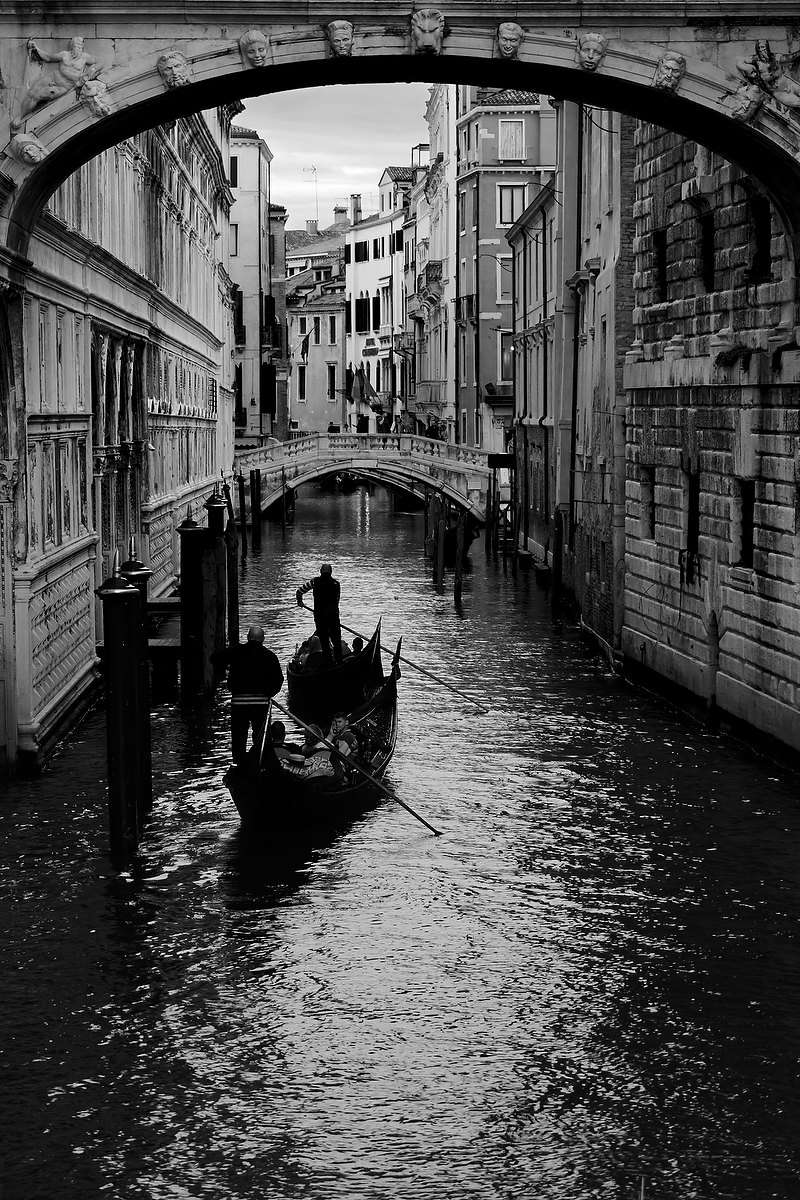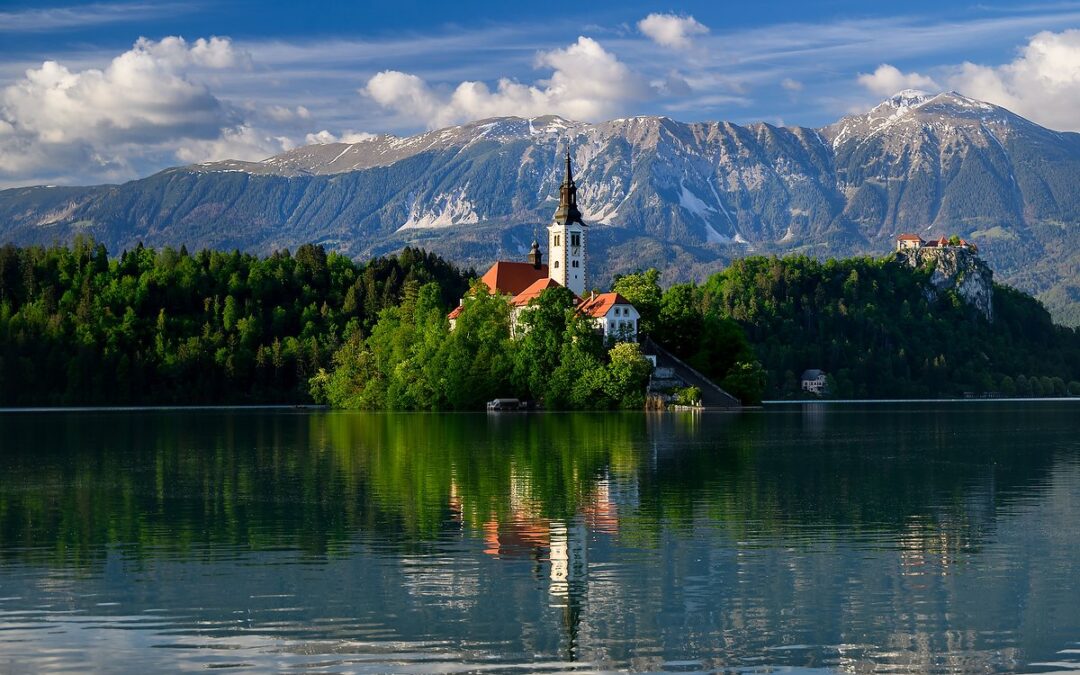When Nikon announced a new 28-400mm, f/4-8 lens in March, I didn’t get very excited. After all, lenses that attempt to cover an extreme range of focal lengths (“all-in-one”) tend to suffer from distortion at their widest and longest and lose sharpness at the long end. However, the larger mount on Nikon’s Z cameras has allowed them to do more optically, which they proved to me with the Z-series 24-200mm f/4-6.3 lens. And, the pre-production reviews of this new lens were very good. So I went ahead and ordered one, which arrived in time for me to take along on a two-week European photo trip. Result? It’s the best all-purpose lens I’ve ever used.

Nikon calls it an “all-in-one superzoom,” and it lives up to the name. Small, it’s not, as seen here on my Nikon Z 8. But it packs a real punch in letting you cover both near and far without changing lenses.

Here’s what 28mm to 400mm looks like. See that tower in the left image? No, not the big one, but the tiny one way off in the distance. That’s it on the right, shot at 400mm. Wow.
The upsides seem obvious, so let’s talk about the downsides first: size, weight and aperture. It’s a pretty beefy lens, and does tend to extend on its own when hanging from my shoulder (it has a “lock” switch you can flip to keep it at 28mm). My Nikkor Z 24-200mm f/4-6.3 lens weighs 1.26 lbs, and the new 28-400 is 1.6 lbs, so only about a quarter-pound heavier. And while the aperture is f/4 at 28mm, it gets to f/5.6 at 50mm and f/8 by the time you hit 200mm. That was one of my concerns, and it turns out I didn’t need to worry because I shoot mainly with the Nikon Z 8 and Z 9 cameras. Both of them handle high ISO’s really well, as I’m comfortable going up to 4000 ISO anytime, and will take it up to 12,800 if I really need to. Add to that I don’t plan on using this lens much for sports or wildlife, so won’t need high shutter speeds often. And, the IBIS (In Body Image Stabilization) on these cameras is so good I surprised myself by getting sharp photos at shutter speeds I normally wouldn’t consider using with a long telephoto lens.

At a glass workshop on the island of Murano, we watched a craftsman sculpt a horse out of liquid glass. However, the studio was very dim, so I had to crank up the ISO. Nikon Z 8, Aperture Priority, Auto white balance, ISO 10,000, 1/100 at f/8 in Matrix metering, 0.0 EV, Nikkor Z 28-400mm f/4-8 VR lens at 200mm.

We hired a model in Venice for an early-morning shoot, and I decided to see how slow a shutter speed I could get away with, using the camera’s built-in image stabilization (VR). Would you believe 1/25 second at 350mm? Nikon Z 8, Aperture Priority, Natural Auto white balance, ISO 1600, 1/25 at f/8 in Matrix metering, 0.0 EV, Nikkor Z 28-400mm f/4-8 VR lens at 350mm.
And the upsides? The biggest, of course, is that focal length range – 28-400mm? That’s crazy! But add to that the fact that it’s sharp (very sharp) throughout the range – even maxed out at 400mm. And that’s even when used wide open. I regularly found myself shooting the lens at its maximum aperture (widest) at whatever focal length I was using because it was always sharp. In fact, after the first couple of days, I only closed the aperture down when I wanted to pick up more depth of field.

As we arrived for our morning tour of Dubrovnik, we found a Franciscan monk feeding pigeons. Because of the crowd in front of him, I couldn’t get close, so took advantage of the the full 400mm focal length of the lens to get this angle from across the square. Nikon Z 8, Aperture Priority, Sunny white balance, ISO 500, 1/800 at f/8 in Matrix metering, -0.7 EV, Nikkor Z 28-400mm f/4-8 VR lens at 400mm.

Since the Nikon Z 8 I was using has a 45-megapixel sensor, I could crop in and still end up with this as a final image, at nearly 20-megapixels. Nikon Z 8, Aperture Priority, Sunny white balance, ISO 500, 1/800 at f/8 in Matrix metering, -0.7 EV, Nikkor Z 28-400mm f/4-8 VR lens at 400mm.

This is a screengrab (at 100%) of that image, to show just how sharp the lens is.

Want another example of sharpness? Take a look at this photo of a swan splashing around in Lake Bled. Nikon Z 8, Aperture Priority, Sunny white balance, ISO 800, 1/2000 at f/8 in Matrix metering, 0.0 EV, Nikkor Z 28-400mm f/4-8 VR lens at 370mm.
We all know that f/8 is not a “fast” aperture to work with, limiting your ability to create shallow depth of field. However, at 300 to 400mm, and relatively close to your subject, even f/8 will result in a pretty soft background. And bokeh? That’s never something I’ve worried much about. In my opinion, if people are looking at the bokeh in the background of a photo I’ve made, then the photo’s not very good. If I’ve found a good subject or scene, that’s what the viewer should be looking at.

Depth of field is dictated by three factors: aperture, focal length and distance to subject. Distance to subject is the most important one, as you can see by this photo, where I’m close enough to this pair of pigeons to force the background out of focus, even at 79mm and f/8. Nikon Z 8, Aperture Priority, Sunny white balance,, ISO 100, 1/500 at f/8 in Matrix metering, -0.3 EV, Nikkor Z 28-400mm f/4-8 VR lens at 79mm.

Another example of how aperture is just one factor in depth of field. While I’m shooting at f/8, being at nearly 200mm and not too far from my subject, I can have the subject sharp but still make the background go nicely soft. Nikon Z 8, Manual exposure, Sunny white balance, ISO 200, 1/1600 at f/8 in Matrix metering, -0.7 EV, Nikkor Z 28-400mm f/4-8 VR lens at 190mm.
But what about the wide-angle end? If you know me, you know I’m a BIG fan of super-wide lenses. My current favorite is the Nikkor Z 14-30mm f/4. So would 28mm mean more time spent changing lenses? As it turned out, no. 28mm was wide enough for most of what I was shooting, and that compact 14-30mm was always close by for when I needed to go wider.

28mm was perfect for this photo of a gondolier and the Church of San Giorgio Maggiore at sunset, in Venice last week. Nikon Z 8, Aperture Priority, Sunny white balance, ISO 250, 1/60 at f/7.1 in Matrix metering, -0.3 EV, Nikkor Z 28-400mm f/4-8 VR lens at 28mm.
I’ll still take the Z 24-200mm f/4-6.3 with me on trips where I won’t need more than 200mm, or also have a much longer lens (like the 180-600mm). And my Z 24-120mm f/4 lens will go in the bag when I know I’ll need that f/4 aperture. But from now on, for most of my travels, this new 28-400mm lens will be what I reach for first. And that range, along with not having to change lenses as much, is going to help me make photos I couldn’t before. Here are a few more of those that I shot in Europe over the last two weeks with this impressive lens:

With the light fading at sunset, I opted for a custom monochrome Picture Control I’ve created for my camera. Nikon Z 8, Aperture Priority, Sunny white balance, ISO 1600, 1/200 at f/6 in Matrix metering, 0.0 EV, Nikkor Z 28-400mm f/4-8 VR lens at 84mm.

Zoomed out, zoomed in, and anywhere in between, this lens delivered. Sunrise at Jamnik Church, Slovenia. Nikon Z 8, Aperture Priority, Sunny white balance, ISO 200, 1/125 at f/8 in Matrix metering, -0.3 EV, Nikkor Z 28-400mm f/4-8 VR lens at 120mm.

Claudia modeled a Carnevale outfit for us near the Plaza San Marco in Venice. To avoid crowds, we did this at 6:30am, and with rain coming down, didn’t have a lot of available light to work with. Luckily, the camera’s excellent image stabilization made that a non-issue. Nikon Z 8, Aperture Priority, Natural Auto white balance, ISO 1600, 1/100 at f/7.6 in Matrix metering, +0.3 EV, Nikkor Z 28-400mm f/4-8 VR lens at 170mm.

I used it a few times on a tripod, for night shots, or in this case with a neutral density filter. These are some of the waterfalls in Plitvice National Park, Croatia. Nikon Z 8, Aperture Priority, Auto white balance, ISO 64, 1/3-second at f/18 in Matrix metering, -1.0 EV, Nikkor Z 28-400mm f/4-8 VR lens at 300mm.

We visited the Lipica Stud Farm, in Slovenia, where they raise Lippizaner horses. While there, they let the mares and foals out for exercise. Having 400mm let me isolate a frisky one. They’re black at birth, but the majority turn white as they age. Nikon Z 8, Aperture Priority, Sunny white balance, ISO 800, 1/1000 at f/8 in Matrix metering, 0.0 EV, Nikkor Z 28-400mm f/4-8 VR lens at 400mm.

Finally, I’d be remiss if I didn’t mention how well this lens worked with my full-spectrum (converted) Nikon Z 6. Used with the Kolari 590 Infrared filter, I saw no hotspots whether using it to create a false color photo like this, or for black and white. Nikon Z 6, Aperture Priority, Preset white balance, ISO 200, 1/80 at f/9 in Matrix metering, +1.0 EV, Nikkor Z 28-400mm f/4-8 VR lens at 44mm.
(If you like this story, please share it with your friends and let them know about the links on photography that I post on my business Facebook page. You can also find my photos on Instagram. And if you’re curious about the workshops I teach, you can find them here. Finally, you can subscribe to this blog on my home page.)


Hi Reed,
I ordered one of these for a National Geographic cruise in Alaska, and I concur that it is a very useful travel lens. I used a Z 600 PF for wildlife, but the z 100-400 barely got used. Very pleased. As you note, the lens does extend by itself, but that is the only significant issue that I’ve run into. For wider shots, I picked up a Viltrox 20mm f2.8, a real bargain option that travels well.
That sounds like a great combination, Clark. And I agree, I’ll always want something wider than 28mm. If I’m not doing low-light or night shots, that will be the 14-30mm f/4. Otherwise, like you, a 20mm f/1.8 or the 14-24mm f/2.8.
Just wondering in regards to your comment, is there anything besides the smaller aperture that prohibits the 14-30 being ideal for night/low light shooting (assuming you are using a tripod in those circumstances anyway, especially to make up for the smaller aperture)
No. I’ve used the 14-30mm f/4 for a lot of night photography, as it is actually is a bit brighter than most f/4 lenses.
Hi Reed,
thanks for the review. I’m interested in more detail about IR usability. Did you try 720 and 850 nm as well? Various focal lengths and apertures also? My current go-to lens for IR is the 28-75/2.8, which is excellent for IR, but obviously a bit short at the long end sometimes.
Thanks
Maik
Hi Maik. I only used it with the 590, but at different focal lengths and apertures, and never saw any hot spots. Before now, my “go-to” lens for IR has been the 14-30 (again, no hot spots), so I’m pretty happy to find a tele zoom that I can use with my IR camera.
I’m really interested in this. How is the weight? I once had an 18-200 DX leans for an older camera, and I did enjoy not changing lenses often. I don’t think the D200 I used it on challenged it. What about this lens and a new, to me, Z8? Would I just get lazy?
Hi Dick. While it seems pretty big, the weight isn’t bad at all. And I don’t think it will make you lazy, just let you get more photos :). And paired with the Z 8 it’s a potent combo, since the camera has 45-megapixels. So you can still crop a lot and have lots of info to work with. I think Nikon will sell a LOT of them.
Excellent review. Thanks for the extremely helpful pro photographer (vs. vlogger) perspective!
Thanks Reed. Great review and terrific images. Also, I have found that the 28-400 is wonderful for 720 IR at any focal length …no hotspots!
Happy Shooting!
Norm